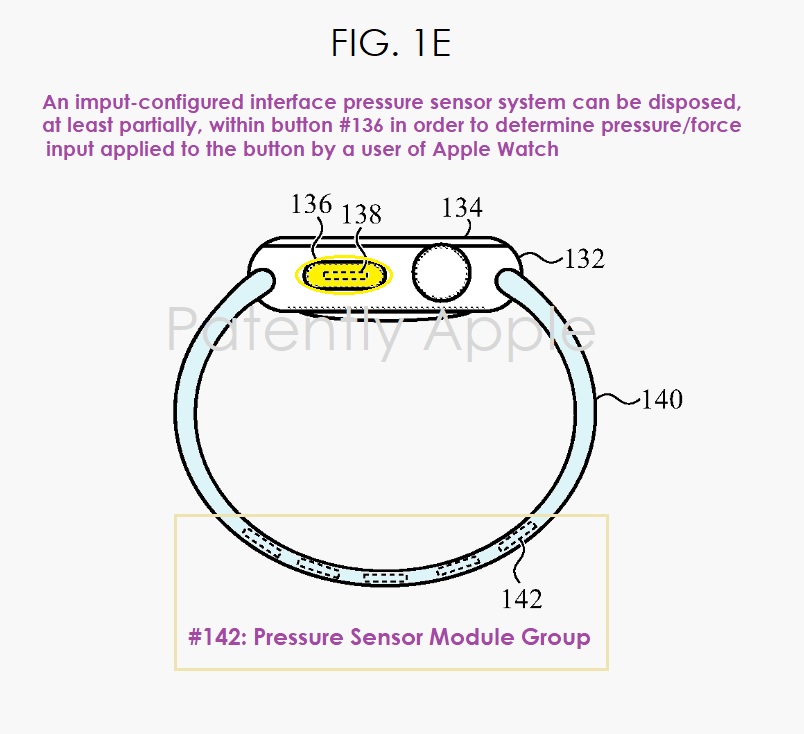
Except for the trackpad on MacBooks, Apple has all but discontinued Force Touch (also known as 3D Touch) technology from its products. However, it seems that the company still has plans to somehow bring Force Touch back, as new patents reveal next-generation force sensors for Apple Watch, MacBook, and even iPhone.
US Patent & Trademark Office published on Thursday (via Patently Apple) multiple Apple patents related to force-pressure sensors. These patents cover how these sensors can be used for different purposes in Apple devices.
One of the patents reveals force sensors designed for “small form factor devices” like the Apple Watch and even AirPods. Regular force sensors take up “substantial volume” inside the product, making them difficult to fit inside certain devices. With the new technology, Apple would be able to make a pressure-sensitive surface using microelectromechanical fluid pressure sensors.
The patent shows an Apple Watch with a pressure-sensitive side button, which indicates that the company might replace the physical buttons with new ones based on pressure sensors. Earlier this year, another patent showed a new Digital Crown that uses optical sensors instead of mechanical rotation, so perhaps Apple is looking for new ways to make the Apple Watch more rugged with fewer moving parts.

Interestingly, a second patent shows how the company has been testing pressure sensors to create smart bands for the Apple Watch that are able to detect blood pressure and even pulse wave velocity. According to rumors, Apple Watch Series 8 will have new health features, so we might see more of that later this year.
3D Touch coming back?
Other Apple patents show how microelectromechanical fluid pressure sensors can be used in the trackpads of MacBooks and even under the iPhone display to “precisely detect small or gradual changes in force.” The description, of course, leads us to believe that the technology would enable an experience similar to that with 3D Touch.
The patent figures show that the technology combines multiple small modules together rather than using a single component, so perhaps this will allow Apple to bring 3D Touch back with a technology that costs less and is easier to include in multiple products (the iPad, for example, never had 3D Touch due to its complexity).

It’s worth noting that there are no rumors of 3D Touch coming back to iPhone, so these technologies may be a few years before they see the light of day. But what about you? Would you like to have 3D Touch back? Let us know in the comments below.
Author: Filipe Espósito
Source: 9TO5Google



